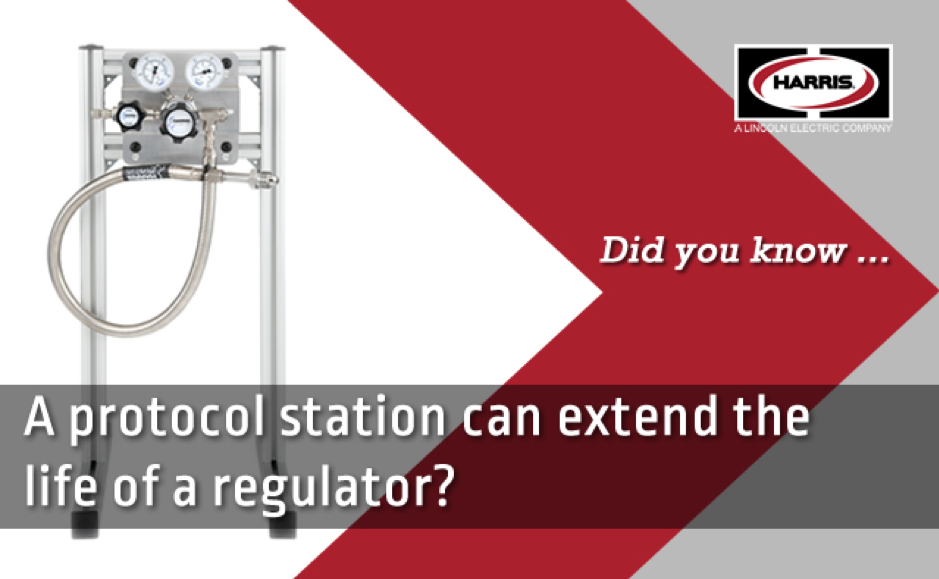
Protocol stations are sometimes referred to as single station manifolds or regulator mounting stations. An ideal protocol station is a regulator mounted to a fixed bracket with an attached pigtail.
Mounting the regulator to a solid surface is a simple way to prevent it from being damaged during cylinder change-out. In a typical cylinder change-out, the operator removes the regulator from the cylinder, then places it to the side when bringing in a new cylinder so as not to damage the outlet piping to the instrument. When the new cylinder is in place, the regulator must be reattached to the cylinder. Following the installation, the operator needs to reset the delivery pressure and/or flow and purge any impurities from the gas stream.
Protocol stations eliminate the handling of the regulator allowing the process to continue without any interruption. In addition, check valves, which are located prior to the pigtail on the inlet side, prevent atmospheric gas contamination and may negate the need to purge high purity gases. In the case of caustic or corrosive gases, any moisture entering the regulator may cause severe corrosion or failure of the regulator.
Lastly, protocol stations serve as a method to increase safety and efficiency in the workplace. Safety is improved as the operator does not risk exposure to a high pressure gas source by removing the regulator from the cylinder. Efficiency is improved with a faster cylinder change-out time.



Paul Greenwell is a District Manager at Harris and has been using industrial gases since the age of 15 when he started his apprenticeship. He has been selling gas equipment for most of his 45 year career and has a passion for safety, cost reduction and productivity gains across the industry.
